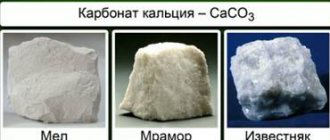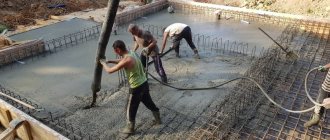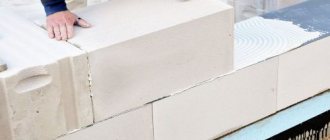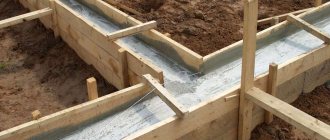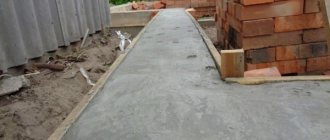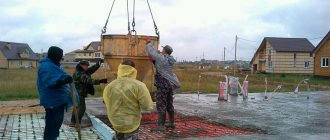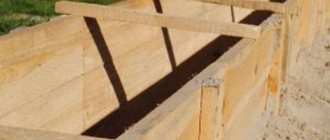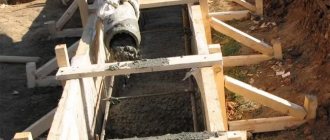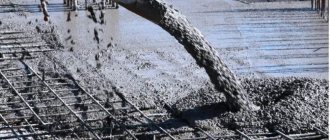- What factors need to be taken into account?
- Do I need to remove the formwork from the foundation?
- Standards for removing formwork systems
- When can formwork be removed from a strip foundation?
- On what day should the formwork be removed from the foundation at different temperatures?
- Stripping in summer
- Stripping in winter, spring and autumn
- How are formwork structures dismantled?
Formwork is a block-type fixing frame that defines the boundaries of a building structure during the process of pouring concrete mixture.
The structure is used for the construction of foundations, monolithic elements, and floors. The success of pouring work depends on how correctly the formwork system is installed. It is also important to wait a certain time before dismantling the formwork, until the concrete reaches maximum strength. In fact, this is not always possible, since the elements for fixation are used for arranging the next area, and the surface needs care and treatment. You need to know when you can remove the formwork after pouring the foundation, and under what conditions. It is often impractical to wait the recommended 28 days in the field of individual construction, but if the standards are violated, deformations may occur and the strength of structures may decrease.
What factors need to be taken into account?
The timing of dismantling is influenced by various factors. Builders advise paying attention to the amount of water added to the concrete mixture, the brand of cement, and the ambient temperature. Cement contains several chemicals that, when interacting with water, enter into a chemical reaction.
For example, two-calcium and three-calcium silicate affects the strength of the solution, while three-calcium and four-calcium aluminate provides a high setting speed. Throughout the chemical process, heat is generated.
There are two stages during which concrete matures:
- The solution sets. Setting time is from 6 to 24 hours (in some cases – longer).
- The concrete is maturing. According to standards, it takes 28 days for concrete to gain maximum strength. But this period is relevant only at temperatures of 20-25 degrees Celsius.
Returning to the question of how long it takes to remove the formwork from the foundation, it is important to note that temperature is an important factor here. The speed of setting depends on it.
Features of crystallization
Crystallization - composition. Typically, a water-based sealer, impregnation.
Crystallization is an important process
Concrete has a porous structure. The lower the grade, the more pores.
During crystallization, salts and metals penetrate the pores of the material. Against the background of a chemical reaction, crystals are formed.
A film is not created on the surface during crystallization. The porosity of the surface disappears and becomes denser. Removes dust and becomes abrasion resistant.
The chemical composition of impregnations varies depending on the manufacturer. The purpose of the impregnation is taken into account.
Standards for removing formwork systems
According to SNiP standards, the structure is dismantled when the concrete gains the necessary strength. This indicator is influenced by the type of monolithic structure being poured:
- 2 MPa - vertical structures can be removed.
- 5 MPa (50%) - strip foundations are stripped.
- 70% strength - dismantling of floor formwork up to 6 meters long.
- 80% strength - dismantling of floor formwork more than 6 meters long is carried out.
Compliance with these requirements is a guarantee that after stripping, the integrity of the monolith will be maintained under the load of its own weight or under random mechanical influences. Concrete becomes stronger even after the formwork is removed.
If the concrete mixture dries too quickly, the solution sets unevenly, which can cause cracks and decrease in rigidity. To prevent such situations, concrete is watered regularly. The time it takes for the mixture to harden from the formwork does not depend on the size of the monolith. These factors are largely influenced by average daily temperatures.
To choose the right foundation contractor, use the convenient builder search on the Building Companion website. You will find examples of completed projects and customer reviews for each contractor and can request an estimate of the cost of the work. Find a builder to arrange the foundation of a turnkey house »
Brand strength of concrete
One of the main characteristics of concrete that influences the duration of its service life without possible changes in the structure is grade or design strength. This characteristic shows what resistance concrete has to mechanical compression, that is, its resistance to a certain type of load. In accordance with this characteristic, concrete is marked, where concrete grade M15 has the lowest strength, and grade M800 has the highest. Knowing the markings of concrete, you can select the material in accordance with the expected loads.
When can formwork be removed from a strip foundation?
Sometimes, in order to determine the degree of hardening, in parallel with pouring, builders make a small block from the same mixture. This is a kind of control element, by the degree of hardening of which you can determine whether the main structure has had time to set, and therefore whether it is possible to remove the formwork.
Numerous observations have revealed that concrete dries out:
- 30% - in 1 day.
- 50% - in 3 days.
- 70% in a week.
- 95-98% - in 28 days.
These periods are typical for temperature and humidity according to SNiP. Due to changes in these indicators, the rate of drying and maturation of concrete may change. As a result of cold weather and rain, the hardening processes slow down. In extreme heat they speed up. Also, other factors influence the hardening process of the concrete mixture, for example, low-quality cement, the presence of slag or other fillers in the composition, and compaction work. If the composition includes high-grade cement, high-quality sand, gravel and various additives, hardening is accelerated.
To understand when to strip the formwork, you need to take into account the reference dates, but remember that they can shift based on various influences. There is no need to rush in this matter. Builders advise not to carry out stripping for as long as possible, but at the same time not to delay dismantling work too much, since after reaching maximum strength, the concrete no longer needs additional support. It is not recommended to leave the formwork for the winter, as wooden elements can negatively affect the fresh concrete surface.
Pouring process
How to pour concrete into formwork? Taking into account the construction conditions, concrete can be prepared using different methods.
Mortar unit
When constructing a large facility that is constantly in need of concrete, a mobile workshop for its production is installed. Dispensers send the required material into the mixer, water is added in portions, and the finished mixture is fed into the body of a truck, which delivers the concrete to the pouring site.
Automixer
This is a machine equipped with a special drum. The necessary ingredients are placed in it, and while transportation to the construction site is being carried out, due to the rotation of the drum, the raw materials are mixed until they are completely ready for pouring.
Concrete mixer
An excellent solution for the construction of small structures, containing up to one hundred and fifty liters of mixture in its rotating bulb. All components are loaded with a shovel according to established standards, water is added and mixing is carried out until fully prepared.
Manual method
For small volumes of work related to concreting, it is enough to carry out several batches on your own. In this case, concrete is prepared in a container of suitable size.
On what day should the formwork be removed from the foundation at different temperatures?
As already noted, the delay in stripping is not critical. The boards will not rot, and the metal structures will not rust in 2-3 months. However, it is often necessary to speed up the dismantling process due to the need to reuse formwork elements. The panels are dismantled in one place and assembled in another, followed by pouring the concrete mixture. The solution sets within 10 minutes after pouring, but further development of strength is important, which takes up to 1 month or more.
The timing is influenced by the following factors:
- Brand of concrete.
- The size of the future foundation.
- Season.
- Weather.
When carrying out concrete work in the summer, dismantling can be done after 72 hours. However, further work is possible only after 3 weeks. In winter, the timing increases due to low temperatures and high humidity. To speed up the process, different technologies for heating the concrete mixture are used.
In fact, builders use special reference materials in their work, which indicate crystallization times based on air temperature. For example, if grade M200-300 is used, concrete gains 80% strength in this time:
- 1 degree - 15 days;
- 5 degrees - 10 days;
- 10 degrees - 7 days;
- 15 degrees - 5 days;
- 20 degrees - 4 days;
- 25 degrees - 3 days;
- 30 degrees - 2.5 days;
- 35 degrees - 2 days.
The formwork system is dismantled from the corners. Removing the supports and racks is done at the very end.
To select the right home builder for your desired low-rise housing construction technology, use the Building Companion directory search. Examples of work and reviews are visible in the contractors' profiles; you can request an estimate of the cost of their work. Find a company to build a box house »
Preparatory work
Before pouring concrete into the formwork, preparatory measures are carried out related to the selection of the necessary tools, preparation of the concrete mixture and arrangement of the site.
Concrete is selected taking into account the necessary characteristics, weather conditions, and soil composition. To increase the strength of the finished structure, a steel reinforcement frame is installed.
You can prepare concrete for pouring into formwork yourself by mixing sand, cement material, crushed stone and water in the required proportions, or you can purchase a ready-made mixture.
For this work you will need:
- different shovels;
- buckets, mixing container or concrete mixer;
- measuring container.
In addition, a formwork system is being prepared that meets certain requirements:
- the material of the shields must be durable in order to reliably protect the reinforced concrete structure from deformation;
- internal surfaces must be smooth to ensure easy dismantling and evenness of the poured surface;
- the entire structure should not have any gaps.
To accurately position the formwork, plumb lines and levels will be required. For fastenings, clamps, spacers and supporting elements are used.
First of all, formwork is installed to pour concrete. The formwork panels must stand vertically and not form gaps through which the concrete mixture will begin to flow. The diagonals of opposite corners can have a maximum discrepancy of no more than three centimeters.
After installing the formwork, its internal surfaces are cleaned and a reinforcement cage is installed. The metal structure must be equipped with locking elements that prevent the rods from contacting the earthen and formwork surfaces.
All that remains is to use a building level to check the evenness, tighten the marking cord and fill.
Stripping in summer
In order for the future foundation of a house to gain at least 50% strength, a temperature in the range of 20 to 30°C is required. Under Russian climatic conditions, summer temperature indicators are close to the given data. Therefore, it is possible to dismantle the formwork in such conditions 3 days after concrete work, which is required by SNiPs.
It is important to note that the normal temperature is the average daily value. In situations where the actual indicators are higher, it is necessary to moisten the concrete in a timely manner or take other measures to slow down the hardening process. Ignoring these measures leads to deterioration in the quality of the monolithic structure.
Briefly about the main thing
If all the work is planned correctly, in one summer season you can completely complete all the work on creating the foundation and begin building the walls. However, the ability to allocate time in the most effective way depends on the characteristics of the material and external conditions (climate, weather, etc.).
The maturation of concrete is an important and responsible process that must not be disturbed. Making attempts to speed up the progress of crystallization, or trying to optimize the holding time of the material always leads to irreversible consequences. Rash decisions can cause destruction and complete loss of your home after some time. Until the required strength is achieved, stripping cannot be carried out.
It is necessary to strictly comply with technological requirements and meet deadlines. The foundation is the most important structure of a house, and its manufacture must be treated with the utmost care.
Stripping in winter, spring and autumn
Next, we will consider the terms that apply to other times of the year. Compared to summer, in colder times the dismantling time increases due to a decrease in temperature and slower hardening of the mixture. At temperatures from 16 to 19°C, the dismantling of the formwork system after pouring is carried out after 6 days. At 11-15°C – after 9 days. At 6-10°C – after 15 days or more. If the air temperature is 1°C, then stripping can be carried out only after 28 days. Based on this information, you can understand when the formwork is dismantled in spring and autumn.
In winter, concrete work is often not carried out due to low air temperatures, at which hydration stops. The exception is a situation in which work on the construction of an object cannot be suspended. In this case, additives that accelerate hardening are used to prepare concrete, and heating technology is also used. To determine the timing of stripping in such cases, you can take as a basis the timing for spring and autumn, as well as the temperature that affects the foundation during hardening.
Main regulatory deadlines
Craftsmen believe that the formwork should be removed when the strength reaches 45-65%. The safest indicators for a building.
Approximate time when you can start stripping:
- 32 degrees – after 48 hours;
- From 32 degrees – after 72 hours;
- +26 degrees – in 5-7 days;
- 0-+10 degrees – in 14-16 days.
Humidity must be taken into account. If increased, the formwork is dismantled after normalization of the indicators.
Dismantled in clear, sunny weather - in the summer months, in early September
It is better to dismantle when it is sunny and dry outside. Better in summer, in the first half of September.
The formwork must be dismantled, otherwise the concrete will gradually collapse. Timely removal of formwork contributes to additional waterproofing of the base. It turns out to be reliably protected from moisture and gradual destruction.
How are formwork structures dismantled?
Builders with extensive experience provide structural solutions that facilitate the process of stripping. We are talking about lubricating shields and boards with special compounds. In some cases, they are covered with PVC film. The easiest way is to dismantle the frame made of metal or plastic. In low-rise private construction, the use of such formwork is unprofitable. The demoulding of a wooden structure is done carefully, starting from the top. Initially, the tightening elements are removed, starting with bolts and ending with twists. Next, the corner parts that are not subject to high loads are dismantled. At the next stage, the shields and racks that grip the ribs are removed, and the plywood sheets are separated from the surface.
When dismantling the formwork structure, one must not forget about the embedded elements installed for utilities. You need to be especially careful in this matter. Impact tools or lifting mechanisms must not be used for stripping, as the structure of the concrete may be damaged.
The article uses photographs from the site https://s-stroit.ru/
To select the right contractor who has a thorough understanding of low-rise building codes, search the Building Companion directory. The profile of each company contains the necessary information, portfolio, reviews, and you can place a request for an estimate of the cost of the service. Find a general contracting and construction supervision company »
Is it possible to speed up
Acceleration of the process is required in the following cases:
- Strength optimization required;
- Construction work has to be carried out in winter. Rapid hardening is required to reduce heating costs;
- A larger number of small concrete products (paving slabs, paving stones) is required;
- Early stripping;
- Continuation of construction earlier than 28 days.
Acceleration is possible in two ways.
The first method is to lower the cement-water ratio. The water gradually drops. A concentrated solution is quickly formed, in which crystallization is accelerated. Setting time is significantly reduced.
Minuses:
- Increased cost of work. Cement consumption increases;
- Deterioration of solution mobility. It becomes more difficult to process. Problems arise with filling the prepared volume. The quality of concrete also decreases noticeably;
- Decrease in w/c. The characteristics of the finished product change. The base becomes brittle and strength decreases.
The second method is to add additives (nitrate, carbonate, chloride).
When accelerators are used, the solubility of cement components increases, and water saturation occurs faster. Accompanies rapid crystallization.
According to GOST requirements, accelerators must increase the solidification rate in the first 24 hours by approximately 35%.
General recommendations from experts
Construction professionals are happy to share secrets and recommendations with less experienced colleagues on how to build a foundation and how long to wait until it dries completely. Many construction experts advise carefully compacting the sand cushion poured into the foundation pit before pouring the foundation itself. They also recommend pouring the solution in several stages. Thanks to this little trick, even a beginner will be able to make a high-quality foundation that will serve as the support of the house for decades. To build a residential building of three or four floors, it is necessary to give the foundation a month and a half to harden. If the base was poured in winter or autumn, then it would not hurt to increase this period to at least 60 days. And after the construction of the first floor, construction must be postponed for 7 days. Within a week, builders will roughly assess the quality of the foundation, its reliability and ability to withstand loads.
So, how long should the foundation stand untouched so that it has time to dry and strengthen properly? On average, this will take him about 25–30 days. However, there are situations when the cement mortar completely hardens in two and a half weeks. But this is rather an exception to the rule than a pattern. Professionals strongly recommend not to continue building a house for about one month after the foundation has been poured. Otherwise, there is no guarantee that the fragile foundation will be able to withstand a serious load. In such a matter, haste will only become a hindrance and a cause of failure in the construction of the building. It is very difficult to visually check the readiness of the foundation for further construction. It is especially difficult to calculate deadlines for a beginner who has never had to deal with such work before. To avoid unnecessary mistakes, he should enlist the help of an experienced craftsman. After all, only a professional builder, having assessed the weather conditions and the quality of laying the foundation, will say exactly how long it is necessary to wait until the cement dries completely.
